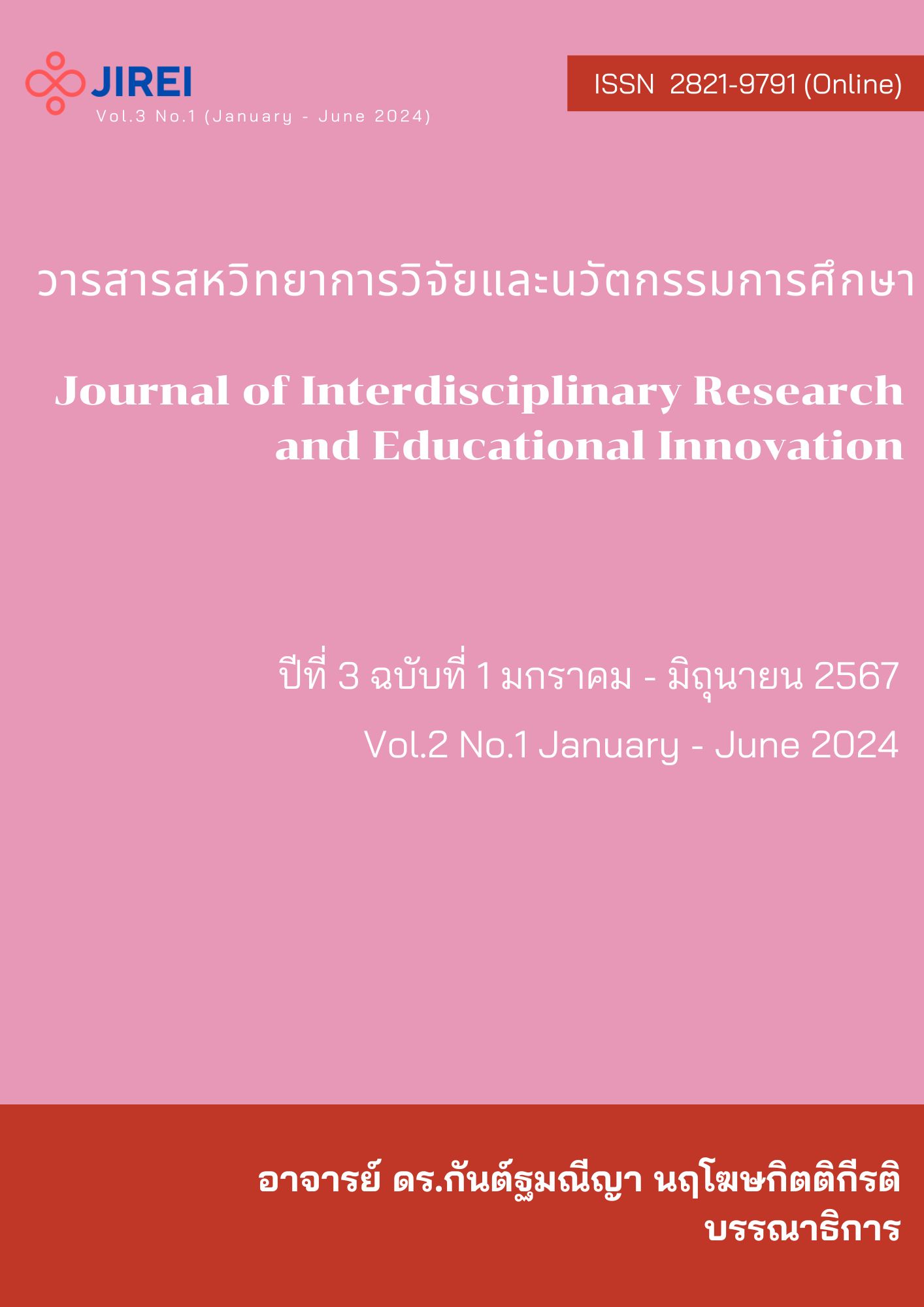Sustainable loyalty to the organization, aiming at organizational quality in the era of Smart Society: Super Smart Society 5.0 (Super Smart Society 5.0)
Keywords:
Loyalty, sustainable organization, organizational quality, Super Smart SocietyAbstract
Unwavering love and dedication to the organization, aiming for sustainable quality in the era of smart society: Super Smart Society 5.0 plays a crucial role in the success and growth of each organization. It defines the identity of each organization, links the relationship between members and the organization, creates values, foundations, and demonstrates shared behaviors among members within the organization. Therefore, it is essential to create and develop an organizational culture that aligns with change to lead the organization to success, pass through various crises, and grow sustainably. It helps create a trustworthy environment, fosters a culture of learning, promotes a flexible working environment, inspires employees, develops them through diverse methods, fosters quick decision-making skills, adjusts strategies to lead competitors, emphasizes the effectiveness of work, and builds a satisfied and loyal customer base. It helps the organization establish a reputable quality and a positive image through unwavering love and dedication to the organization, aiming for sustainable quality in the era of smart society: Super Smart Society 5.0. It possesses key features such as proactive work, leadership in change, a person of learning, creativity, digital technology innovation, flexibility and adaptability, emotional intelligence, and effective communication. Self-adjustment, mission, participation, and individuality are essential to drive the business towards sustainable growth, coupled with a sense of responsibility towards society and the environment.
References
กรองกาญจน์ ทองสุข. (2554). แรงจูงใจในการปฏิบัติงานที่ส่งผลต่อความจงรักภักดีของบุคลากรในวิทยาลัยการอาชีพร้อยเอ็ดจังหวัดร้อยเอ็ด. การค้นคว้าอิสระบริหารธุรกิจมหาบัณฑิต, สาขาวิชาเอกการจัดการทั่วไป, คณะบริหารธุรกิจ, มหาวิทยาลัยเทคโนโลยีราชมงคลธัญบุรี.
จาตุรงค์ วัฒนศิริ. (2552).ความผูกพันความจงรักภักดีและการมีความสุขในการทำงานของครูโรงเรียนจินดาวัฒน์ จังหวัดระยอง. งานนิพนธ์การศึกษามหาบัณฑิต, สาขาวิชา.
น้ำผึ้ง บุบผา. (2552). ปัจจัยที่ส่งผลต่อความภักดีต่อองค์กร: บริษัทในเครือสยามกลการ จำกัด. การศึกษาค้นคว้าด้วยตนเอง เสนอเป็นส่วนหนึ่งของการศึกษาหลักสูตรปริญญาบริหารธุรกิจมหาบัณฑิต สาขาวิชาการบริหารธุรกิจ ของมหาวิทยาลัยนเรศวร.
พยอม วงศ์สารศรี. (2545). การบริหารทรัพยากรมนุษย์. กรุงเทพฯ: สำนักพิมพ์สุภา.
วรารัตน์ เขียวไพรี. (2550). การพัฒนาทรัพยากรมนุษย์ : Human resources management. กรุงเทพฯ: สิรบุตรการพิมพ์.
สาคร สุขศรีวงศ์. (2551). การจัดการ: จากมุมมองนักบริหาร (พิมพ์ครั้งที่4). กรุงเทพฯ: จี พี ไซเบอร์พรินท์.
วิภา จันทร์หล้า. (2559). ความจงรักภักดีของพนักงานที่มีต่อบริษัทโตโยต้า โกเซ เอเชีย จำกัด จังหวัดชลบุรี. หลักสูตรการศึกษามหาบัณฑิต. สาขาวิชาการบริหารการศึกษา. คณะศึกษาศาสตร์ มหาวิทยาลัยบูรพา.
ประคัลภ์ ปัณฑพลังกูร. (2560). ความจงรักภักดีของพนักงานต่อองค์กร มันหายไปจริงๆหรือ.สืบค้น 1 มิถุนายน 2560, จาก https://prakal.wordpress.com/
Aepiphanni Business Consulting. (2023). Dynamic Leadership: How Do Leaders Evolve, Manage. Retrieved from https://aepiphanni.com› blog › dynamic...
Berman, S., & Korsten, P. (2014). Leading in the Connected Era. Strategy and Leadership, 42(1), 37-46.
Bryta, Schulz . (2023).The Dynamic Leadership Framework. Retrieved from https://www.framework. Dynamic.leader.
Ceocosulting. (2023). 7 Traits of a Dynamic Leader .- Retrieved from https://www.ceocosulting.com › post › 7-traits-of-a-dyna.
Dag Von, Lubitz & Nilmini. Wickramasinghe. ( 2006). Dynamic Leadership in unstable and unpredictable environments, International Journal of science Enterprises Ltd, 3(4), 339-350.
Daniels, Richard. (2023). The 10 fundamental traits of a dynamic leader. Retrieved from www.dynamic.trait.leader.
Dawson, P. & Andriopoulus,C. (2014). Managing Change, Creativity and Innovation.
Thousand Oaks: Sage.
Greenfield, David. (2023).The enactment of dynamic leadership National Institutes of Health Retrieved from https://pubmed.ncbi.nlm.nih.gov ›
Grobler, P. A. (2016). In search of excellence: leadership challenges facing companies in the new South Africa. SAM Advanced Management Journal, 61(2), 22-34.
Jacinto C. Gavino & Edwin J. Portugal. (2015). An Integrated and Dynamic Leadership Framework: A Perceptual Map of the Interaction Among the Leader, Followers, Outcomes, and Context. Review of Integrative Business and Economics Research, 4 (4), 237-251.
Kouzes, J. & Posner,B. (2012). The Leadership Challenge, 5th Ed. San Francisco: Jossey- Bass.
Léautier, F. (2014). Leadership in a Globalized World: Complexity, Dynamics and Risks. New York: Palgrave Macmillan.
Medium, Nina. (2023 ), Dynamic leadership is a powerful driver of success. Retrieved from www.dynamic.leadership.
Newton, Robert. (2023). 8 - Principles that a Dynamic Leadership must have Retrieved from https://www.businessstudynotes.com › pr...
Noorderhaven, N., & Vallejo, B. (2016). Transformational leadership and project success: The mediating role of team-building. International Journal of Project Management, 34(5), 806–818.
Rahul, Panchal. (2023). What Is Dynamic Leadership? Inspiring Change And Driving Success The Leadership Quarterly, 39(1), 34–51.
Ross, R. L., Williams, C. E., & Harrington, N. T. (2018). Construct redundancy in leader behaviors: A review and agenda for the future. The Leadership Quarterly, 29(1), 236–251.
Smith, Peter & Cockburn, Tom, (2022). Dynamic Leadership Models for Global Business Retrieved from https://ssrn.com/abstract=3061505.
Warwick, Levey. (2023). 5 Characteristics of Dynamic Leader in a Remote Workforce. Retrieved from https://www.upwork.com
Wolfgramm, S. Flynn-Coleman, D. & Conroy, D. (2015). Dynamic interactions of agency in leadership: an integrative framework for analysing agency in sustainability leadership, Journal of Business Ethics, 26 (4), 649–662.
Adler,P. A., &Adler,P. (1988). Intense loyalty in Organizations: A case study of college Athleties. Administrative Science Quarterly, 33(3), 401-417.
Fletcher, G.P. (1993). Loyalty: An essay on the morality of relationships. New York: Oxford University Press.
Fullagar, C., &Barling, J. (1989). A longitudinal test of model of the antecedents and Consequences of union loyalty. Jounal of Appled Psychology, 71(2), 213-227




